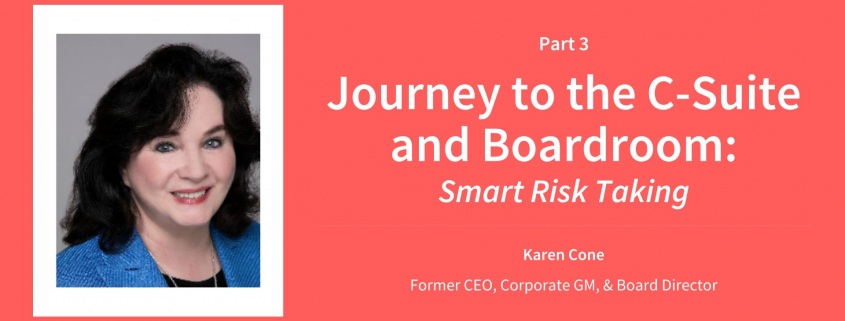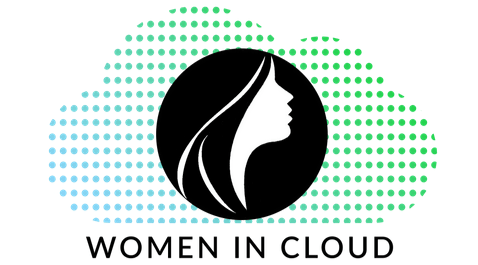Over the course of my career I have lived and worked in Europe, Asia and the US as a CEO, a general manager with iconic brand corporations, and served on Boards. Needless to say, I have taken my fair share of risks over the years. Currently I am on multiple advisory boards for FinTech and AI early stage growth firms, a venture partner with a Fund focused on women founders in technology, and actively support the missions of Women in Cloud (WiC) and the Athena Alliance. Since I am introducing myself, I will happily add that I am also a wife, mother and grandmother.
If you have read any of my earlier blogs, you know I have shared stories of success and failure along my career journey. This blog focuses on taking high-risk decisions and highlights some of the lessons I have learned, including ones relevant to our current, unprecedented COVID-19 crisis.
Takeaways
Despite the cliff-hanging experiences I have previously shared, I continue to take risks. In the dynamic, competitive landscape in which we operate, we need to exploit opportunities and rapidly confront threats. I must admit, the decisions related to this pandemic crisis are extraordinary, such as how long to “lock down,” whether it is possible to hold onto jobs, what benefits to provide employees or not, how to handle contract workers, when to re-open work and participate in the community…
These are some of the questions I explore when taking a typical, non-life threatening, risk. Yet, as I think about these questions, I realize they are crisis relevant also.
- Is the potential reward worth the risk?
- Do we understand the opportunity and/or the impacts of our decision?
- Do we have a strategy and action plans and back-up contingency plans?
- Do we have the right team in place and does the team have each other’s back?
- When things go wrong, is it really time to declare failure or have we just hit the inevitable “messy middles” that one needs to work through?
- Are key players (e.g., leadership team, management, direct reports, investors/stakeholders, Board) really open to a “fail fast” approach or is “success only” the real mandate?
- Have I developed a strong bench, so that when I confront an urgent situation and must make an immediate decision and own it, key players will trust my judgement?
These questions vary depending on our current situation, market, industry and options. They change and moreover they can evolve with time.
Open and Transparent Communications
Despite all efforts, failure or high risk situations can happen. Sometimes due to events out of our control. Regardless of the reason, open and transparent communications is very often the key to keeping or re-gaining trust and gaining the time needed to turn the situation around and achieve success. Communications could mean:
- Keeping the organization updated on the situation, sharing strategy and actions plans, and providing guidance on how to respond to clients and other external queries.
- Sending communications directly to clients, acknowledging their feedback, and providing assurances that we are working on it and will keep them updated.
- Providing frequent, on-topic, clear and honest communications to employees through the most commonly used and any new channels.
- Finding effective ways to get employee and client feedback, and dealing with emotional impacts in addition to the business situation.
- High visibility and engagement from the top executive leaders is very important, as well as an effective cascade so more immediate managers can be in alignment with the organization’s philosophy and strategy when talking with their teams.
When taking on a planned high-impact initiative, make the time to gain the buy-in of leadership and key stakeholders. Determine what are the shared rewards that make the risk worth taking – together. It is equally critical to have the buy-in and ownership of the working team, whether direct reports, peers or collaborators. This is a continuous process, so if an unexpected crisis happens, there is critical support on which one can rely.
Accountability
Success (or surviving failure) involves:
- Keeping the team continuously engaged, listening to them even if their advice will not result in action, and providing recognition;
- Engaging and seeking the advice and buy-in of those above and your peers, as well as finding sponsors and advocates;
- Taking ownership and accountability for one’s decisions!
Taking risks includes accepting the risk of failure. The question is not if, but how one fails. In Harvard Business Review, James W. Harris the CEO of Seneca Financial Group, wrote: “Skipping out on colleagues when things look grim is the most common failing among super-charged executives. Lying about the true condition of a business is another. Failure is no excuse to chuck ethics out the window.”
Owning my failures has been extremely hard, and yet the lessons learned have led to far more success and skills to deal with ambiguity and the unexpected. My greatest personal success is seeing the people who joined me in taking risks and rose above any failure that may have happened, move on to achieve their own success.
A wise and experienced executive told me at the very start of my career: “Karen, I am confident you will be successful in your career. As you climb up the ladder, just remember to step around people, not on them. You are sure to meet them again on the way down or in different circumstances. You may not understand this now, but you will.”
It took some time, but I always remembered these words and did, indeed, come to understand them. When it comes to fighting a crisis like this global pandemic, we clearly must all function together, as one team, up or down the “ladder”.
Karen Cone FORMER CEO, CORPORATE GM, & BOARD DIRECTOR
Karen Cone is the former Microsoft General Manager, Worldwide Financial Services Sector, and CEO and Board Director of the advisory research firm, TowerGroup. She currently serves on multiple advisory boards and is a venture partner for the MastersFund, focused on women founders in technology. Karen has also held senior executive positions with increasing responsibility and scope at IBM, MasterCard and Gartner, where she served on the Gartner International Board. She has lived and worked in the Americas, EMEA & Asia. Karen and her husband, Jeff, have three sons and four grandchildren and currently live in Seattle, Washington.








